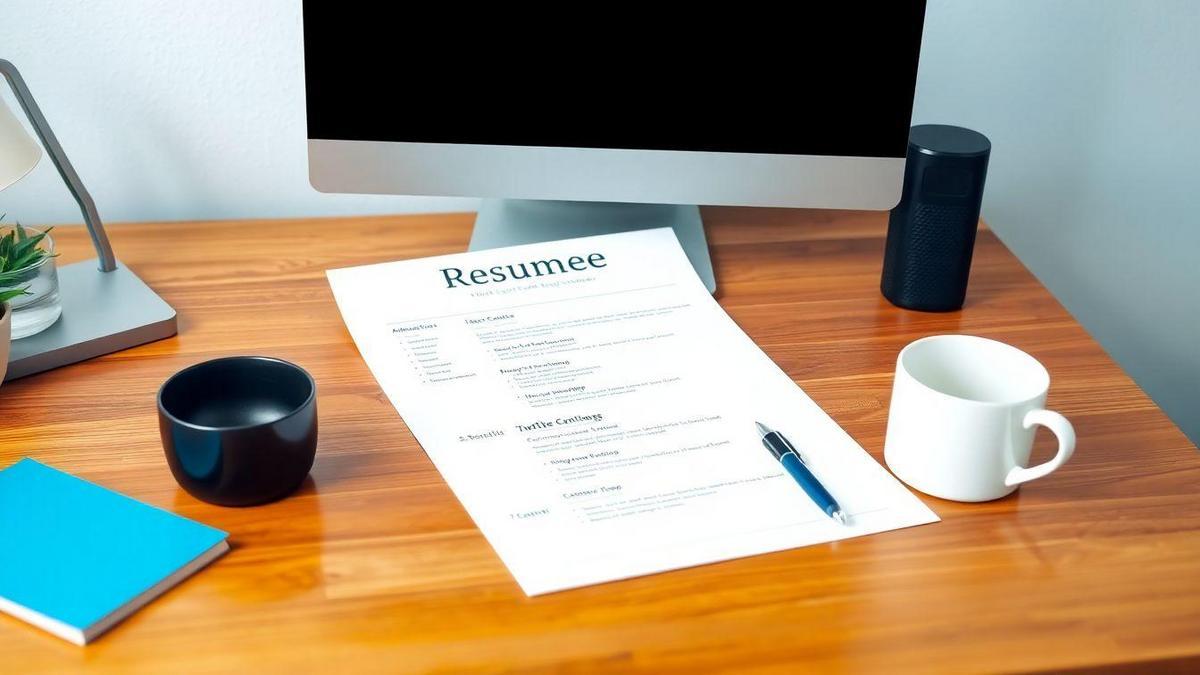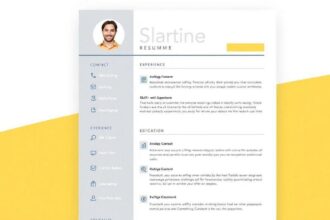Tips for Writing an Entry-Level Job Résumé can change everything for me. It’s my chance to grab an employer’s attention! In this article, I’ll share the essential components that my résumé needs. I will show you the key sections to include, the best way to format it, and how to use keywords to ensure it shines in the ATS. Plus, I’ll provide quick strategies to make my résumé stand out, helping me highlight my skills and create a captivating summary that draws in hiring managers. Let’s uncover the common mistakes to avoid and learn how to tailor my résumé just for each job. By the end, I’ll know exactly how to proofread my résumé for a polished finish. I’m excited to dive in!
Essential Components of an Entry-Level Job Résumé
Key Sections to Include in My Résumé
When I set out to craft my entry-level job résumé, I know there are key sections that I must include to make it shine. Here’s what I focus on:
- Contact Information: I always start with my name, phone number, email, and LinkedIn profile. This is my first impression, and I want it to be clear and professional.
- Objective Statement: I write a brief statement about my goals and what I hope to achieve. It should be specific to the job I’m applying for.
- Education: Since I’m entry-level, my education is important. I list my degree, school name, and graduation date. If I have any honors or relevant coursework, I add that too.
- Experience: Even if I haven’t held a formal job, I include internships, volunteer work, or part-time jobs. I highlight my responsibilities and achievements.
- Skills: I make a list of my relevant skills, from software proficiency to soft skills like communication or teamwork.
- Certifications: If I have any certifications related to the job, I make sure to include them. They show that I’ve gone the extra mile.
How to Format My Résumé for Success
Formatting is key to catching a recruiter’s eye. Here’s how I do it:
- Keep It Simple: I use a clean layout with clear headings. I stick to one font type and use bold for section titles.
- Use Bullet Points: I break down my information into bullet points. This makes it easy to read and digest.
- Limit Length: I keep my résumé to one page. I want to show my best self without overwhelming the reader.
- Consistent Margins: I ensure my margins are even. This gives my résumé a polished look.
Here’s a quick table to see how I structure it:
| Section | Details |
|---|---|
| Contact Information | Name, Phone, Email, LinkedIn |
| Objective | 1-2 sentences about my goals |
| Education | Degree, School, Graduation Date |
| Experience | Internships, Volunteer Work |
| Skills | Relevant skills |
| Certifications | Any job-related certifications |
Using Keywords to Optimize My Résumé for ATS
To make sure my résumé gets noticed, I use keywords. Many companies use Applicant Tracking Systems (ATS) to filter résumés. Here’s how I do it:
- Job Description: I read the job description carefully and pick out important words and phrases.
- Incorporate Keywords: I weave these keywords naturally into my résumé. For example, if the job requires teamwork, I mention my experience working in teams.
- Avoid Jargon: I steer clear of overly technical terms unless they are in the job description. I want my résumé to be understood by both machines and humans.
Quick Strategies for Writing My Résumé
Tips for Writing an Entry-Level Job Résumé Efficiently
When I sit down to write my résumé, I want to make sure it’s clear and to the point. First, I focus on the job I’m applying for. I look at the job description and pick out the key skills and requirements. Then, I make a list of my own skills and experiences that match those needs.
Here are some quick tips to help me create an effective entry-level résumé:
- Use a simple format: I keep my layout clean and easy to read. I use clear headings and bullet points.
- Tailor my résumé: Each time I apply, I tweak my résumé to fit the job. This shows I’m serious about the position.
- Keep it short: I aim for one page. I want to grab attention quickly.
- Include relevant experience: Even if I haven’t had a job in the field, I can include internships, volunteer work, or school projects that show my skills.
How to Highlight My Skills and Experience
To really make my skills shine, I think about what makes me stand out. I want to show potential employers that I have what they need. Here’s how I do it:
- Use action verbs: I start bullet points with strong verbs like “managed,” “created,” or “led.”
- Quantify achievements: Whenever possible, I add numbers. For example, “Increased sales by 20% in three months.”
- Focus on soft skills: I also highlight skills like teamwork, communication, and problem-solving, which are important for entry-level jobs.
Here’s a simple table to help me see how I can highlight my skills:
| Skill | Example from Experience |
|---|---|
| Leadership | Led a team project in school |
| Communication | Presented findings in class |
| Problem-solving | Resolved a conflict in a group task |
Creating a Compelling Summary Statement in Minutes
I know that a strong summary statement can hook the reader right away. In just a few sentences, I want to capture who I am and what I bring to the table. Here’s how I craft my summary quickly:
- I start with my job title or what I’m studying.
- I mention my key skills and what I hope to achieve in my next job.
- I keep my tone enthusiastic and professional.
For example, my summary might look like this:
“Recent marketing graduate with strong communication skills and a passion for digital marketing. Eager to leverage my internship experience to contribute to a dynamic team.”
Common Mistakes to Avoid in My Résumé
Pitfalls in Entry-Level Résumés I Should Watch Out For
When I’m crafting my entry-level résumé, there are some common pitfalls that I need to avoid. First off, I should never use a one-size-fits-all approach. Each job is different, and I must make sure my résumé reflects that.
Another mistake is focusing too much on duties instead of achievements. Instead of saying, “I worked at a coffee shop,” I could say, “I increased sales by 15% through excellent customer service.” This change shows what I can do, not just what I did.
Lastly, I need to watch out for spelling and grammar errors. These mistakes can make me look careless. A clean résumé shows that I pay attention to details.
How to Tailor My Résumé for Each Job Application
Tailoring my résumé for each job application is crucial. Here’s how I can do it:
- Read the Job Description Carefully: I should highlight the skills and experiences that match what the employer is looking for.
- Use Keywords: Including specific keywords from the job listing can help my résumé stand out. If the job requires “teamwork,” I should mention my teamwork experiences.
- Adjust My Summary: I can tweak my summary to reflect what I bring to the table for that specific role.
| Job Title | Required Skills | My Relevant Experience |
|---|---|---|
| Marketing Intern | Social Media | Managed social media accounts |
| Sales Associate | Customer Service | Improved customer satisfaction |
| Data Entry Clerk | Attention to Detail | Maintained error-free records |
Importance of Proofreading My Résumé Before Sending
Proofreading my résumé is a must-do before I hit send. A single typo can change the way employers see me. I want to present myself as professional and prepared.
I can ask a friend or family member to look it over, or even read it out loud. This way, I can catch mistakes I might have missed. Taking a moment to double-check my work can make all the difference in landing that interview.






